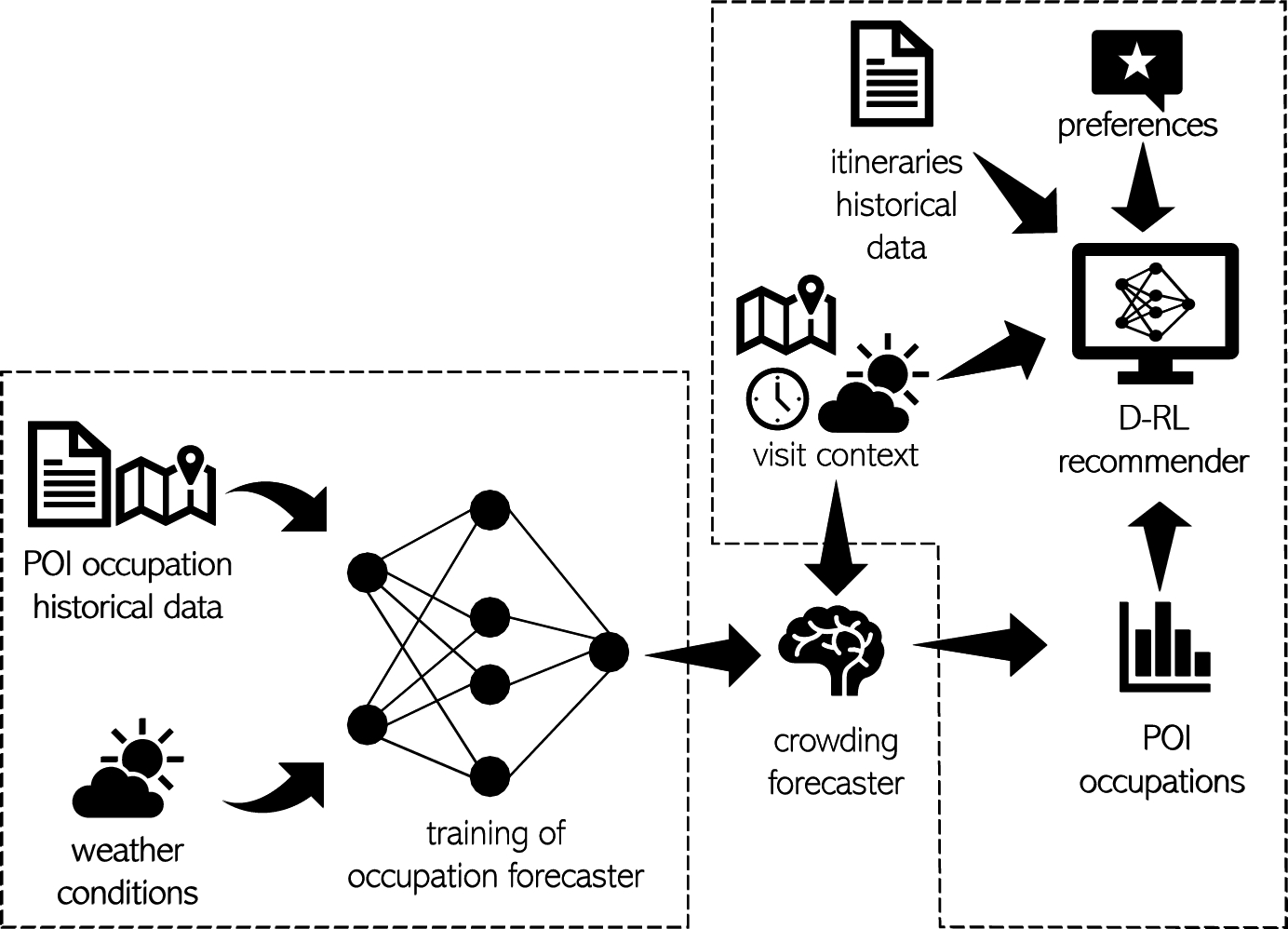Project: Multi-agent reinforcement learning for sustainable touristic recommender system
Description

A touristic recommender system (TRS; Dalla Vecchia et al., 2024; Gaonkar et al., 2018; de Nijs et al., 2018) often provides to its users a sequence of recommendations instead of a single suggestion to optimize the user experience in the available time interval. Due to the sequential nature, as well as the uncertainty about the dynamics of the system, reinforcement learning (RL, Sutton and Barto, 2018) has been used to optimize the suggestions of attractions. In this application, the system makes suggestions based on contextual information, such as the user’s preferences, weather forecast, and the occupancy of the attractions. Carefully coordinated recommendations can improve the global tourist experience as it avoids attractions being over capacity. In this way, the problem of sustainable tourism is taken into account (Yu and Egger, 2021).
On the one hand, prior methods have considered how to deal with the uncertainty in the model by using reinforcement learning techniques to optimize the sequences of recommendations Dalla Vecchia et al. (2024). On the other hand, to deal with the capacity constraints, previous methods have considered planning in CMDPs (de Nijs et al., 2018)
Goal.
Optimize a TRS based on Multi-agent Constrained Reinforcement Learning (RL; Sutton and Barto, 2018).
Prerequisites
- Familiarity with sequential decision-making, such as Markov decision processes and reinforcement learning.
- Experience with constrained MDPs or multi-agent settings is helpful.
References
- A. Dalla Vecchia, S. Migliorini, E. Quintarelli, M. Gambini, and A. Belussi. Promoting sustainable tourism by recommending sequences of attractions with deep reinforcement learning. Information Technology & Tourism, 2024
- F. de Nijs, G. Theocharous, N. Vlassis, M. M. de Weerdt, and M. T. J. Spaan. Capacity-aware sequential recommendations. In AAMAS, pages 416–424. IFAAMAS, 2018.
- R. Gaonkar, M. Tavakol, and U. Brefeld. MDP-based itinerary recommendation using geo-tagged social media. In IDA, pages 111–123. Springer, 2018.
- R. S. Sutton and A. G. Barto. Reinforcement Learning: An Introduction. MIT press, 2 edition, 2018.
- J. Yu and R. Egger. Tourist experiences at overcrowded attractions: A text analytics approach. In Information and Communication Technologies in Tourism, pages 231–243. Springer International Publishing, 2021.
Details
- Student
-
PDPaul Dewez
- Supervisor
-
 Thiago Simão
Thiago Simão
- Secondary supervisor
-
EQElisa Quintarelli
- External location
- University of Verona